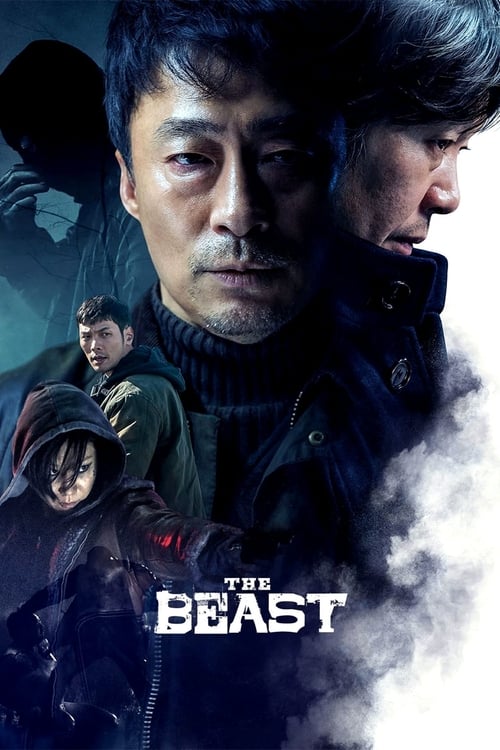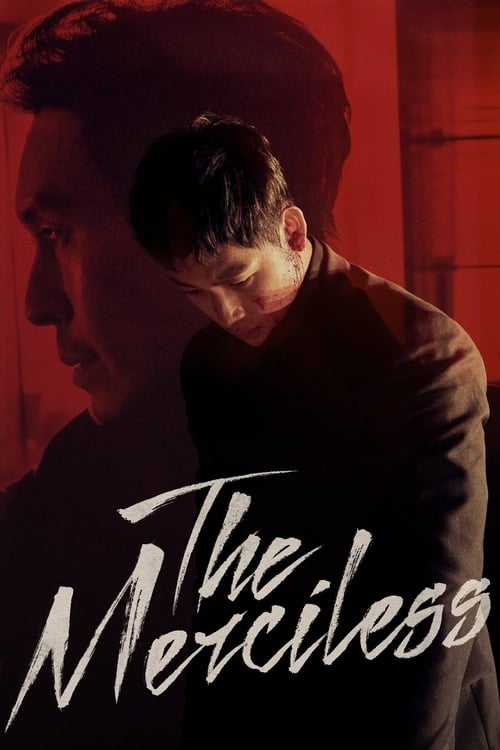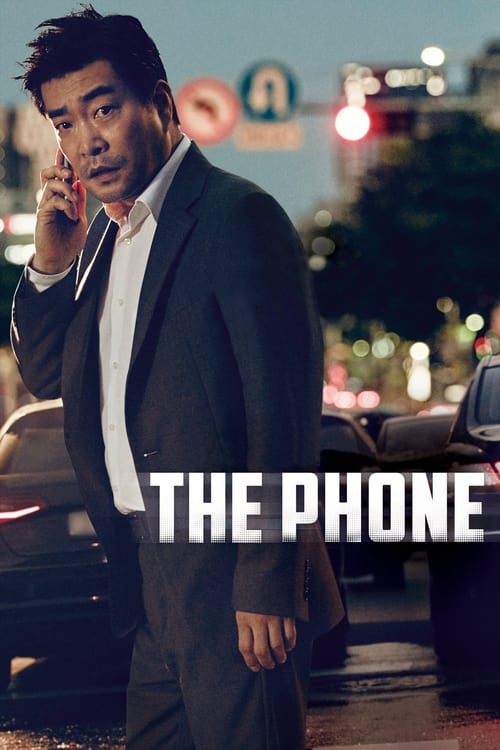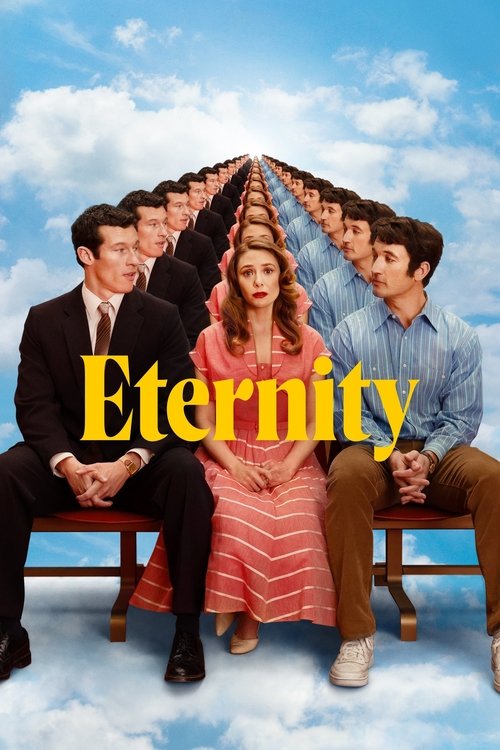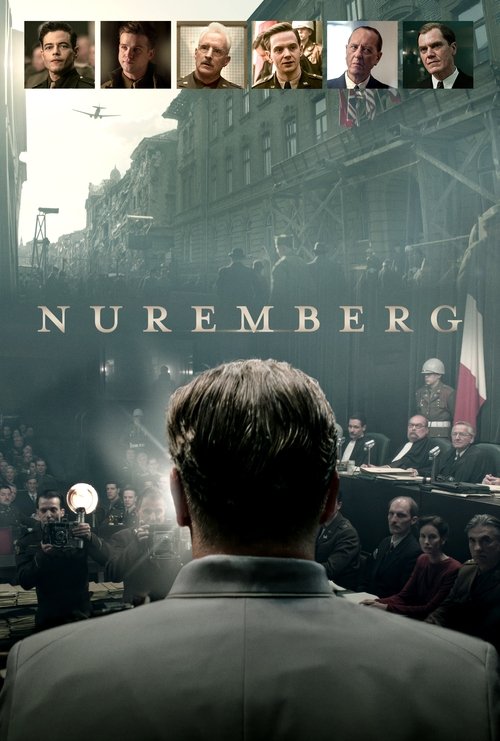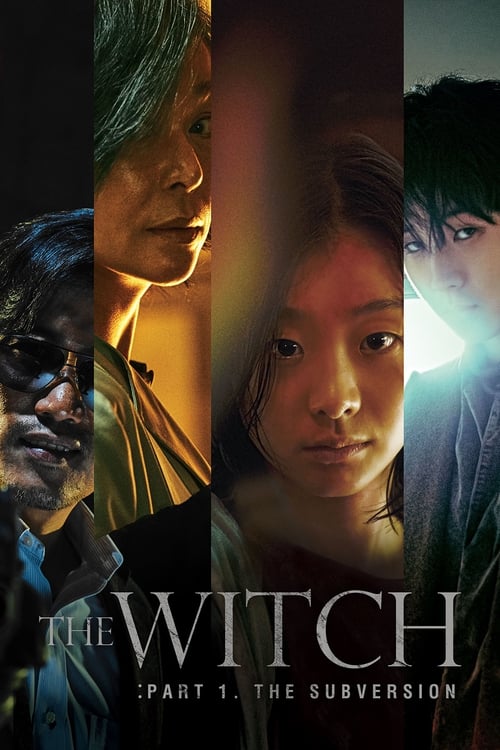
Ask Your Own Question
What is the plot?
The Beast (2019): Complete Plot Narrative
The Korean Peninsula trembles under the weight of a brutal crime that will expose the darkest corners of law enforcement and the corrupting influence of ambition. In the tidelands of Incheon, the mutilated body of a teenage girl emerges from the murky waters--a victim who had been missing for weeks, whose only connection to the world was her voice in a church choir. This discovery sets in motion a chain of events that will destroy two men who were once partners, now transformed into bitter rivals willing to sacrifice everything for a promotion that neither truly deserves.
The Detectives and Their Rivalry
Jeong Han-soo and Han Min-tae stand at the center of this tragedy, though neither realizes how deeply they will become entangled in the very crimes they are meant to solve. These two detectives were once partners, but years of accumulated resentment have left nothing but bad blood between them. The homicide department's chief is due for promotion, and his position will soon become vacant. Both Han-soo and Min-tae are competing fiercely for this captaincy, each believing they are the superior investigator and more deserving of advancement.
Their methods reflect their fundamentally different philosophies. Han-soo operates in the shadows of Seoul's underworld, shaking down drug dealers, cultivating relationships with bar madames connected to criminal networks, and employing brute force whenever he deems it necessary. He is a detective who gets results, though the methods he uses to obtain them exist in morally gray territory. Min-tae, by contrast, attempts to operate by the book, following proper procedure and maintaining at least the appearance of ethical conduct. Yet beneath this veneer of professionalism, Min-tae is equally willing to employ underhanded tactics to advance his career. The rivalry between them is not merely professional--it is personal, rooted in years of perceived slights and competitive tension.
The Investigation Begins
When the teenage girl's body is discovered, both detectives are assigned to the case. Han-soo had been investigating her disappearance without success, and now the discovery of her remains only intensifies the pressure on him to produce results. The case captures national attention, becoming a matter of intense public concern that shakes the entire Korean Peninsula. The media scrutiny and political pressure create an environment where solving the crime quickly becomes more important than solving it correctly.
Han-soo's initial theory focuses on a priest-novice connected to the church choir where the victim sang. He pursues this lead with characteristic aggression, convinced that he has identified the killer. However, Min-tae systematically dismantles this theory, proving through careful investigation that the priest-novice is innocent. This early setback humiliates Han-soo and deepens the rift between the two detectives. The case, which should unite them in their pursuit of justice, instead becomes a battleground for their personal ambitions.
As Han-soo struggles to find new leads, his methods become increasingly desperate. He shakes down drug dealers and underworld figures, seeking any scrap of information that might point him toward the real killer. During one of these encounters, he brutally beats a low-level gangster who had assaulted a bar madame--a woman who serves as one of his key intelligence sources. The violence is swift and savage, and Han-soo justifies it to himself as necessary roughness in pursuit of justice. The gangster's face is pulped under Han-soo's fists, and the detective walks away convinced that he has acted righteously.
The Informant Returns
The turning point arrives when Choon-bae contacts Han-soo. Choon-bae is an informant who had previously worked with him, providing valuable intelligence from her position within the criminal underworld. However, she has just been released from prison after serving three years, and her release is directly connected to Han-soo's past. Years ago, a drug dealer had betrayed her, leading to her arrest and imprisonment. Han-soo had been unable or unwilling to prevent this outcome, and Choon-bae has spent three years in prison nursing her resentment toward him.
When she reaches out to him, she claims to possess crucial information about the murder case. She tells Han-soo that she knows where the teenage girl was killed--information that could break the case wide open and secure his promotion. Han-soo, desperate and under pressure, agrees to meet with her. He believes that this meeting will finally provide him with the breakthrough he needs.
But Choon-bae has her own agenda. She uses this meeting not to help Han-soo solve the murder, but to settle her own score. The drug dealer who had betrayed her and caused her imprisonment is still alive, still operating in the criminal underworld. Choon-bae sees an opportunity for revenge, and she takes it. During their meeting, she shoots the drug dealer using Han-soo's gun--a weapon he has carelessly left accessible. The murder is swift and deliberate, and Han-soo finds himself standing over a dead man, holding the murder weapon.
The Blackmail
Choon-bae then reveals her true purpose. She has deliberately implicated Han-soo in the drug dealer's murder, and now she holds all the leverage. She offers him a deal: she will provide him with the location where the teenage girl was murdered--information that will allow him to solve the case and secure his promotion--but only if he agrees to cover up the drug dealer's death. She needs an alibi, and she needs Han-soo to use his position as a detective to ensure that she is not connected to the murder.
Han-soo stands at a crossroads. He can refuse Choon-bae's offer and turn her in, but doing so would expose his own complicity in the murder. His gun was used. He was present. The evidence would be damning. Alternatively, he can accept her deal, become an accessory to murder, and use the information she provides to solve the teenage girl's case and secure the promotion he desperately wants.
The choice he makes reveals the true nature of his character. Han-soo accepts the deal. He agrees to obstruct justice, to become a criminal himself, to provide false testimony and cover up a murder. In that moment, he crosses a line from which there is no return. He is no longer a detective pursuing justice--he is a corrupt official willing to sacrifice his integrity for personal advancement.
The Apartment Building
Following Choon-bae's information, the investigation leads Han-soo and Min-tae to an apartment building occupied by Chinese gangsters. This location holds the key to the teenage girl's murder, and both detectives converge on it, each hoping to be the one who apprehends the killer and claims credit for solving the case.
The apartment building becomes a scene of chaos and violence. The confrontation with the Chinese gangsters escalates into a firefight, with bullets tearing through walls and bodies falling. Han-soo and Min-tae fight their way through the building, pursuing leads and seeking the killer. The mission yields crucial information about the murderer's identity, but it also ends in catastrophe. People die in the violence--some of them innocent, some of them criminals, some of them law enforcement. The line between justice and murder becomes increasingly blurred.
The Unraveling
As the investigation progresses, Min-tae begins to suspect that something is fundamentally wrong with Han-soo's work. He notices inconsistencies in the evidence, gaps in the timeline, and behaviors from Han-soo that don't align with a straightforward investigation. Min-tae smells something fishy, as the saying goes. He senses that his rival is concealing information, that Han-soo is not being truthful about how he obtained certain leads or why he is pursuing particular angles.
This suspicion causes the investigation to take a wrong turn. Instead of working together to solve the case, the two detectives begin working against each other. Min-tae attempts to uncover what Han-soo is hiding, while Han-soo desperately tries to maintain his cover-up and solve the case before Min-tae discovers the truth. Their rivalry, which was always problematic, now becomes actively destructive. They undermine each other's efforts, withhold information, and pursue contradictory investigative strategies.
The Moral Descent
As the narrative unfolds, Han-soo's character deteriorates further. The violence he commits becomes increasingly personal and unjustifiable. The bar madame who had provided him with intelligence--the woman he had beaten the gangster for assaulting--becomes a liability. She knows too much about his methods, his connections, and potentially his involvement in the cover-up. One night, Han-soo finds himself alone with her, and in a moment of cold calculation, he strangles her to death.
This murder is not committed in the heat of passion or in self-defense. It is a calculated act of elimination, performed by a man who has completely abandoned any pretense of morality. Han-soo has transformed from a detective willing to bend the rules into an outright murderer. The violence and deception have accumulated to such a degree that he can no longer distinguish between justice and crime.
The Climax
The film builds toward a devastating climax where all the accumulated lies, violence, and corruption come crashing down. The two detectives finally confront each other, and the question of who will be blamed for the chaos becomes central to the resolution. Han-soo's cover-up is exposed. Min-tae discovers the truth about the drug dealer's murder and Han-soo's complicity in it. The investigation into the teenage girl's murder becomes entangled with investigations into Han-soo's own criminal conduct.
The final confrontation between Han-soo and Min-tae is not a moment of triumph or justice. It is a moment of mutual recognition--each man sees in the other a reflection of his own compromises and failures. They are both corrupt. They are both willing to sacrifice justice for personal advancement. The only difference is that Han-soo has gone further, has committed more murders, has descended deeper into criminality.
The Ending
The film concludes without offering redemption or clear resolution. By the climax, the violence and deception that have accumulated throughout the narrative have lost all meaning. The teenage girl's murder is solved, but the solution is tainted by the corruption of those who solved it. The killer is apprehended, but the detectives who caught him are themselves criminals. Justice has not been served--it has been perverted.
The final scenes show the consequences of the detectives' choices. Han-soo faces the fallout from his actions, though the exact nature of his punishment remains ambiguous. Min-tae must decide whether to expose his rival's crimes, knowing that doing so will also expose the corruption within the department and potentially implicate himself. The Korean Peninsula, which was shaken by the teenage girl's murder, is now shaken by the revelation of how thoroughly the investigation has been compromised.
The film ends not with resolution but with a kind of moral reckoning. Han-soo and Min-tae, two men who were meant to uphold the law, have become criminals themselves. Their rivalry has not produced justice--it has produced only more victims, more lies, and more corruption. The system that promoted their competition, that rewarded results over ethics, that valued promotion over principle, has transformed them into monsters.
In the final moments, there is no triumph, no catharsis, no sense that justice has been served. There is only the recognition that the pursuit of personal advancement has corrupted everything it touched, that the institutions meant to protect society have been turned into instruments of crime, and that the line between detective and criminal has been erased entirely. The Beast--the title referring not to the murderer but to the corruption that consumes those who pursue power at any cost--has claimed its victims, and none of them are innocent.
What is the ending?
In the ending of "The Beast," the protagonist, a young woman named Anna, confronts the reality of her life and the choices she has made. After a series of intense and emotional events, she ultimately decides to leave her past behind and embrace a new beginning, symbolizing her growth and the shedding of her former self.
As the film progresses towards its conclusion, Anna finds herself in a tense standoff with her father, who represents the oppressive forces of her past. The emotional weight of their relationship culminates in a confrontation that forces Anna to confront her fears and desires. In a moment of clarity, she chooses to break free from the cycle of violence and control that has defined her life.
The final scenes depict Anna walking away from her old life, a powerful symbol of her newfound independence and strength. The film closes on a note of hope, suggesting that while the past may haunt her, she has the power to shape her own future.
As the film approaches its climax, the atmosphere is thick with tension. Anna, having endured a tumultuous journey filled with emotional turmoil and conflict, stands at a crossroads. The setting is dimly lit, reflecting the weight of her choices and the shadows of her past that loom over her.
In the first scene of the ending, Anna confronts her father in their home, a place that has been both a sanctuary and a prison for her. The room is filled with remnants of their shared history--photographs, mementos, and the palpable silence that speaks volumes. Her father, a figure of authority and control, attempts to manipulate her emotions, reminding her of the sacrifices he has made for her. Anna's internal struggle is evident; she feels the pull of familial loyalty but also the suffocating grip of his expectations.
As the confrontation escalates, Anna's voice rises, filled with a mix of anger and desperation. She challenges her father's narrative, revealing the pain and suffering that his control has inflicted upon her. The emotional stakes are high, and the tension crackles in the air. Anna's determination to break free from his influence becomes a powerful moment of defiance.
In the next scene, Anna steps outside, the cool night air hitting her like a wave of clarity. The world outside is vast and intimidating, yet it represents freedom. She takes a deep breath, her heart racing as she contemplates her next move. The camera captures her hesitation, the flicker of doubt in her eyes, but also the flicker of hope. This moment is pivotal; it signifies her internal battle between the comfort of the known and the fear of the unknown.
As she walks away from her father's house, the landscape shifts. The streets are empty, illuminated by the soft glow of streetlights, symbolizing the path ahead. Anna's footsteps echo in the silence, each step a declaration of her intent to reclaim her life. The emotional weight of her decision is palpable; she is shedding the layers of her past, moving towards a future that is uncertain but filled with potential.
In the final scenes, Anna is seen in a new environment, perhaps a new city or a fresh start. The sun rises on the horizon, casting a warm light that envelops her. This imagery signifies renewal and the promise of a new beginning. Anna's expression is one of determination and resilience; she is no longer the girl defined by her father's shadow but a woman ready to forge her own path.
The film concludes with Anna walking confidently into her future, leaving behind the remnants of her past. The fate of her father remains ambiguous, a lingering reminder of the conflict she has left behind. Anna's journey is one of empowerment, illustrating the strength it takes to break free from the chains of familial obligation and embrace one's true self. The ending resonates with a sense of hope, suggesting that while the past may linger, the future is hers to shape.
Is there a post-credit scene?
In the movie "The Beast" produced in 2019, there is no post-credit scene. The film concludes its narrative without any additional scenes or content after the credits roll. The story wraps up with a focus on the emotional and psychological journey of the characters, leaving the audience with a sense of closure regarding the events that transpired throughout the film.
How do the supporting characters influence the main storyline?
The supporting characters serve as catalysts for the protagonist's growth and the Beast's transformation. Their interactions reveal different facets of the main characters, challenging their beliefs and pushing them towards pivotal decisions that drive the plot forward.
What role does the setting play in the development of the plot?
The setting, a desolate and haunting landscape, mirrors the internal struggles of the characters. It creates a sense of isolation and danger, amplifying the tension and emotional stakes as the characters confront their fears and desires.
What motivates the character of the Beast throughout the film?
The Beast, a complex character, is driven by a deep-seated need for connection and understanding. His past traumas and experiences shape his actions, leading him to seek out relationships that often result in conflict and emotional turmoil.
How does the relationship between the protagonist and the Beast evolve over the course of the film?
Initially, the protagonist is fearful and wary of the Beast, viewing him as a threat. However, as the story progresses, she begins to see the layers of his character, leading to a complicated bond that oscillates between fear, empathy, and ultimately, a desire for redemption.
What are the key turning points in the relationship between the protagonist and the Beast?
Key turning points include moments of vulnerability where the Beast reveals his past, leading to a shift in the protagonist's perception. Additionally, moments of crisis where their lives are at stake force them to confront their feelings for each other, ultimately reshaping their relationship.
Is this family friendly?
"The Beast," produced in 2019, is not considered family-friendly due to its intense themes and graphic content. Here are some potentially objectionable or upsetting aspects that may affect children or sensitive viewers:
-
Violence: The film contains scenes of physical violence, including confrontations that may be graphic and disturbing.
-
Animal Cruelty: There are instances involving harm to animals, which can be upsetting for viewers who are sensitive to animal welfare.
-
Emotional Trauma: Characters experience significant emotional distress, including themes of loss and betrayal, which may be heavy for younger audiences.
-
Dark Themes: The narrative explores themes of survival, desperation, and moral ambiguity, which may be unsettling for some viewers.
-
Intense Situations: The film features tense and suspenseful moments that could provoke anxiety or fear.
These elements contribute to a mature tone that may not be suitable for children or those who are sensitive to such content.

